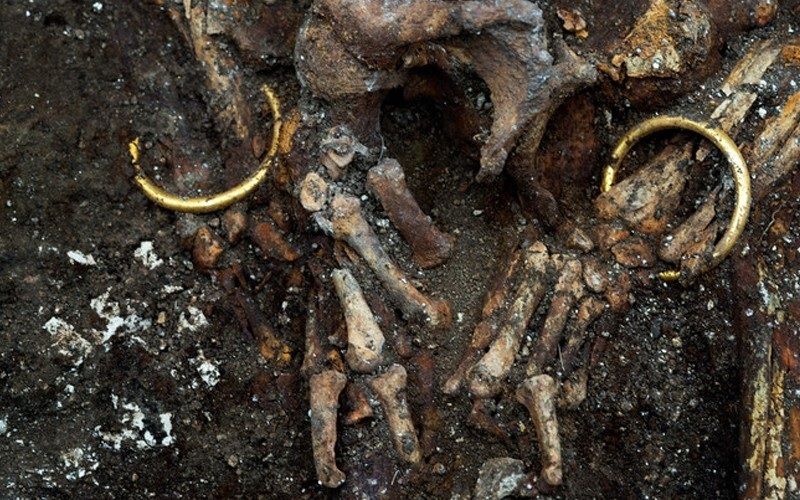Post by UKarchaeology on Aug 10, 2015 18:11:40 GMT

Excavated recently by a team of archaeologists, the aristocratic tomb of Lavau (northeast France) dates to the beginning of the 5th century BCE, and contains an exceptional funerary collection: a Mediterranean bronze cauldron adorned with lion heads and Acheloos (a river deity), a figurative attic vase and assorted bronze vessels. Lying at the centre of the tomb, the archaeologists have uncovered an individual (north-south alignment with head to the south) who was laid to rest with a chariot.
At present it is unclear whether the remains represent a male or female. The individual is adorned with a solid gold torc weighing in at 580 grammes (even heavier than that of the Vix princess from northern Burgundy) along with two gold bracelets. The left bicep sports a lignite cuff. This jewellery bears similarities to that found in the tomb of Reinheim (border area of Germany and France). Near the neck area are several finely worked amber beads.
Some fragments of clothing and shoes (leather and a row of rivets) are also preserved, including two iron and coral hook attachments.

Male or female?
Although the archaeologists feel that the tomb occupant is male, the poor state of preservation of the bones makes it difficult to come to a conclusion, so it is entirely possible that the deceased could be a woman, given a precedence for this. In the 5th century, between the end of the Hallstatt period and beginning of la Tène, several high status female tombs have been found in the northeast quarter of France, including that of Vix.
(source/pics: www.pasthorizonspr.com/index.php/archives/06/2015/laid-to-rest-with-chariot-and-solid-gold-torc )
